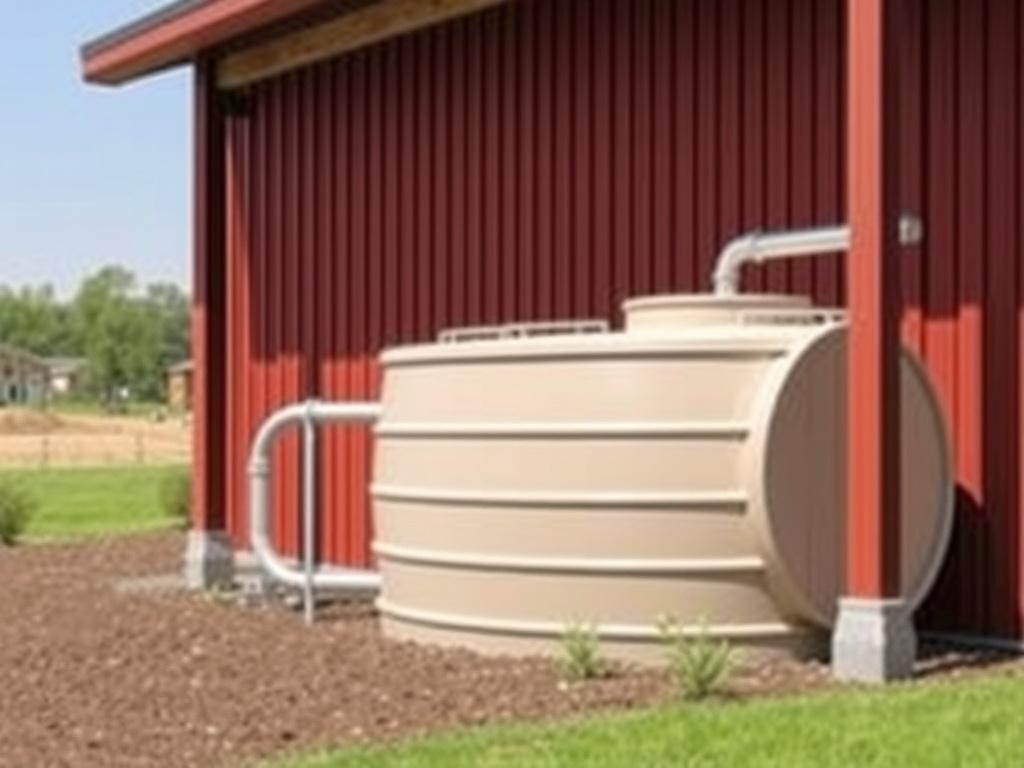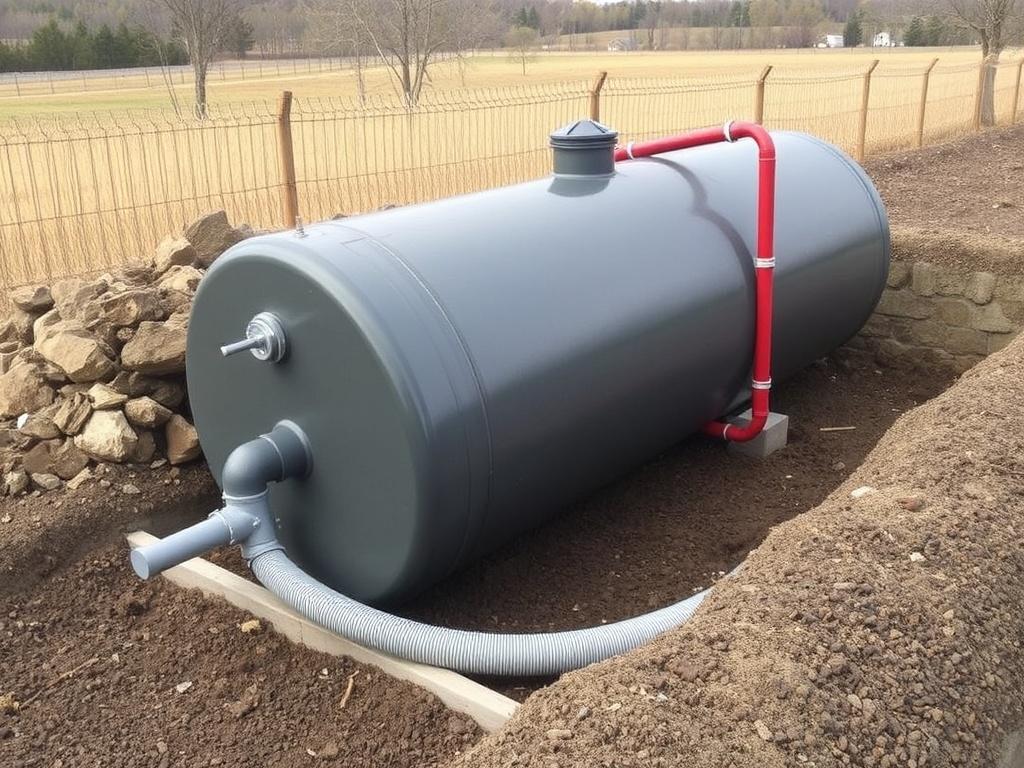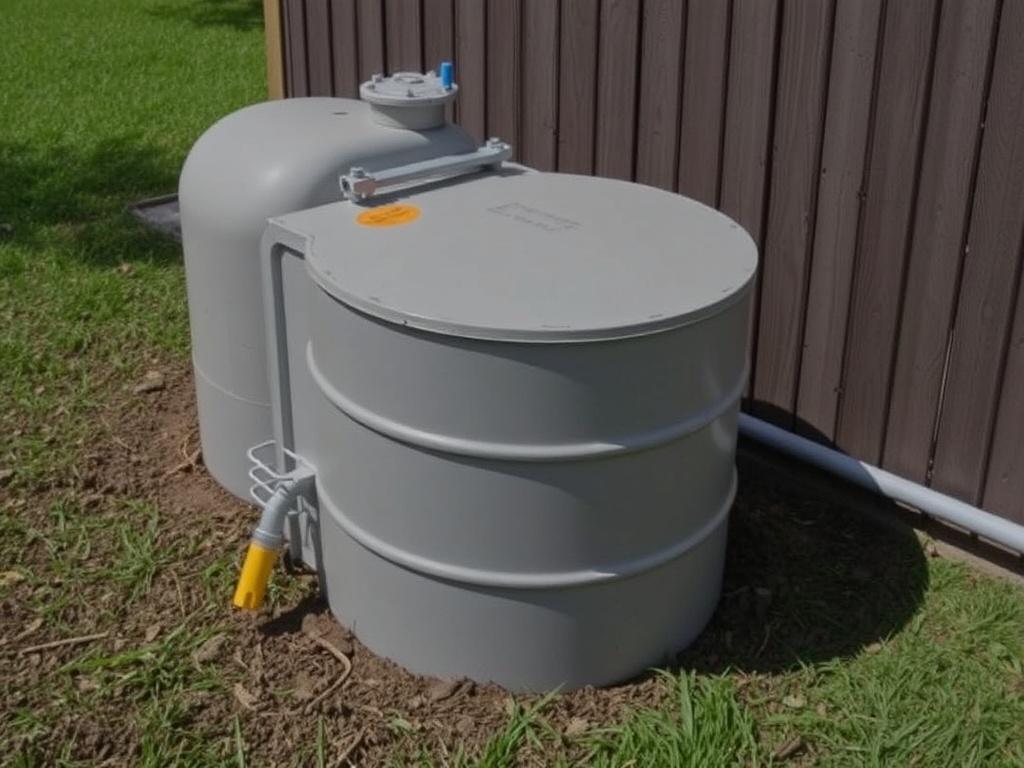When it comes to operating a brewery or winery, there’s much more to consider than just the art of crafting delicious beverages. Behind the scenes, managing the wastewater produced by your brewing or winemaking process is crucial, especially if you’re located in a rural or off-grid area. Installing a septic tank for a brewery or winery is one of the most practical and eco-friendly ways to handle this challenge. But not all septic systems are created equal, especially when dealing with the unique wastewater profile of a brewery or winery. In this comprehensive guide, we’ll explore everything you need to know about septic tanks for breweries and wineries, from understanding why a specialized septic system is necessary, to choosing the right size and maintenance tips, ensuring you keep operations both sustainable and compliant.
- Why Does a Brewery or Winery Need a Specialized Septic Tank?
- Understanding Brewery and Winery Wastewater Characteristics
- Key Components of Brewery Wastewater
- Key Components of Winery Wastewater
- The Importance of Proper Septic Tank Sizing for Breweries and Wineries
- Factors Influencing Septic Tank Size
- Types of Septic Systems Suitable for Breweries and Wineries
- Conventional Septic Tanks
- Advanced Septic Systems with Pretreatment
- Constructed Wetlands and Land Application Systems
- Installation and Maintenance Tips for Septic Tanks at Breweries and Wineries
- Site Selection and Soil Testing
- Regular Inspection and Pumping Schedule
- Monitoring Water Usage and Chemical Inputs
- Emergency Contingency Planning
- Cost Considerations and Financing Options
- Environmental and Regulatory Compliance
- Best Practices for Compliance
- Innovations and Sustainability in Brewery and Winery Wastewater Management
- Recycling and Reuse of Wash Water
- Biogas Recovery
- Integrated Wastewater Treatment Systems
- Community and Environmental Stewardship
- Frequently Asked Questions About Septic Tanks for Breweries and Wineries
- Can I use a regular residential septic tank for my small brewery or winery?
- How often should a septic tank for a winery be pumped?
- Do I need a permit to install a septic tank for commercial use?
- What signs indicate my septic system is not handling brewery or winery wastewater properly?
- Are there eco-friendly septic systems specifically designed for wineries?
- Conclusion
Why Does a Brewery or Winery Need a Specialized Septic Tank?
At first, you might think that a regular septic tank will work just fine for handling any wastewater. However, the wastewater from a brewery or winery can be quite different from typical household or commercial waste. These industries produce wastewater that contains high levels of organic matter, yeast, sugars, cleaning chemicals, and sometimes even alcohol residues. This unique composition can create challenges for conventional septic systems.
For example, if a septic tank isn’t designed to handle the high biochemical oxygen demand (BOD) and total suspended solids (TSS) common in brewery or winery wastewater, it can quickly become overwhelmed. The result? Frequent clogging, unpleasant odors, environmental pollution, and costly system failures. This is why a septic tank for a brewery or winery requires careful planning and design to accommodate these factors.
Understanding Brewery and Winery Wastewater Characteristics
Before you can choose the right septic system for your brewery or winery, you need to understand the nature of your wastewater. This knowledge will shape the entire treatment process.
Key Components of Brewery Wastewater
Brewery wastewater often contains high levels of organic substances due to the use of grains, yeast, hops, and sugars. The cleaning processes used to maintain sterile equipment also introduce chemicals and detergents. Here’s a breakdown:
- High Biochemical Oxygen Demand (BOD): Brewery wastewater can have BOD values ranging between 1,000 to 5,000 mg/L, meaning it requires significant oxygen to break down organic materials.
- Total Suspended Solids (TSS): These are particulates like grain husks, yeast, and other residues that can clog septic systems.
- pH Levels: Usually neutral but can fluctuate depending on cleaning agents used.
- Chemicals and Cleaning Agents: Caustic and acidic cleaning solutions may interfere with natural bacterial action in septic tanks.
Key Components of Winery Wastewater
Winery wastewater, while different, also contains high organic loads primarily from grape skins, stems, pulp, and leftover sugars. During harvest and production, large quantities of wash water with residual fruit sugars and organic matter are generated.
- High BOD: Winery wastewater typically exhibits BOD values of 1,000 to 8,000 mg/L, depending on the timing (e.g., harvest season).
- Total Suspended Solids: Includes grape solids and sediments.
- Acidity: Winery wastewater often has a lower pH (acidic), which can affect microbial activity.
- Nutrient Content: Contains nitrogen and phosphorus, which can impact nutrient loads on the treatment systems.
The Importance of Proper Septic Tank Sizing for Breweries and Wineries

It’s not simply about plugging in a standard septic tank and hoping for the best. The size of a septic tank for a brewery or winery must be carefully calculated based on volume and characteristics of wastewater, frequency of production, and peak usage times.
Factors Influencing Septic Tank Size
| Factor | Description | Impact on Septic Tank Size |
|---|---|---|
| Production Volume | Amount of beer or wine produced daily or weekly | Higher production means larger wastewater volume |
| Wastewater Characteristics | Levels of BOD, TSS, and pH | Affects detention time and tank design |
| Cleaning Frequency & Methods | How often equipment is cleaned and chemicals used | Can increase chemical loads; requires chemical-resistant materials or pretreatment |
| Peak Usage Periods | Harvest seasons or batch production spikes | Requires capacity to handle sudden wastewater surges |
| Local Regulations | Environmental and health compliance requirements | May dictate minimum sizes and treatment standards |
For example, a small craft brewery producing 100 barrels per week will have vastly different wastewater volumes than a large-scale winery during harvest season. Accurately estimating your wastewater output ensures the septic system works efficiently without frequent backups.
Types of Septic Systems Suitable for Breweries and Wineries
Not all septic tanks are a good fit for breweries and wineries. Some systems are better equipped to manage the unique challenges these industries present.
Conventional Septic Tanks
Traditional anaerobic septic tanks break down organic waste and solids by using bacteria in an oxygen-free environment. While cost-effective, these systems typically struggle with high-strength wastewater from breweries and wineries because:
- They lack the capacity to break down high BOD loads effectively.
- Chemical detergents can kill the bacterial colonies necessary for treatment.
- Solids accumulation may happen faster, requiring more frequent tank cleaning.
Nevertheless, conventional septic tanks can be used if combined with pretreatment steps or as part of a larger wastewater management system.
Advanced Septic Systems with Pretreatment
Pre-treatment technologies help reduce the BOD and TSS levels before wastewater reaches the septic tank, making the treatment process more efficient. These include:
- Grease Traps: Remove fats, oils, and greases that can clog tanks.
- Screening Systems: Remove large solids to prevent accumulation.
- Equalization Tanks: Manage flow rates to avoid shocks to the septic system.
- Aerobic Treatment Units (ATUs): Use oxygen to enhance bacterial degradation, suitable for high organic loads.
These technologies can be combined before or after the septic tank to improve overall system performance and longevity.
Constructed Wetlands and Land Application Systems
Some breweries and wineries opt for natural wastewater management systems such as constructed wetlands or land application fields after initial septic tank treatment. These systems leverage natural processes to further cleanse wastewater before it returns to the environment.
Installation and Maintenance Tips for Septic Tanks at Breweries and Wineries

Proper installation and ongoing care are critical to keeping your septic system functioning smoothly.
Site Selection and Soil Testing
Before you install a septic system, conduct thorough soil percolation tests to ensure your drainage field can handle the expected load. Soil composition affects absorption rates and septic drain field design. Avoid placing tanks too close to water sources to prevent contamination.
Regular Inspection and Pumping Schedule
Due to the high organic and solid content in brewery or winery wastewater, septic tanks for these industries may require more frequent pumping — sometimes twice a year or even quarterly during peak production. Regular inspections will help catch problems early such as sludge buildup or leaks.
Monitoring Water Usage and Chemical Inputs
Using eco-friendly cleaning agents can protect the beneficial bacteria in your septic tank, improving its efficiency. Additionally, limiting excessive water usage during cleaning or production can reduce hydraulic load and strain on the system.
Emergency Contingency Planning
Keep a ready plan for emergencies such as system backups or leaks. Have contact information for septic service professionals and consider investing in alarms or monitoring devices that alert you to potential system failures.
Cost Considerations and Financing Options
The cost of installing a septic tank for a brewery or winery varies widely depending on system size, technology chosen, and site conditions. Traditional systems tend to be less costly upfront but may incur higher maintenance fees, while advanced treatment systems come with higher installation costs but fewer operational issues.
| System Type | Estimated Installation Cost | Maintenance Frequency | Suitability for Brewery/Winery Wastewater |
|---|---|---|---|
| Conventional Septic Tank | $5,000 – $15,000 | Every 6-12 months | Limited, better with pretreatment |
| Aerobic Treatment Unit (ATU) | $15,000 – $30,000 | Quarterly to bi-annually | Highly suitable for high BOD |
| Constructed Wetlands | $20,000 – $50,000 | Annually | Great for sustainable farms/wineries |
| Advanced Pretreatment + Septic | $10,000 – $25,000 | Every 6 months | Good balance for small to mid-sized operations |
Many local and state governments offer grants or low-interest loans for environmentally-friendly wastewater treatment solutions. It’s worthwhile to explore these options to offset initial investment costs.
Environmental and Regulatory Compliance

In most regions, breweries and wineries are subject to environmental regulations regarding their wastewater discharges. Non-compliance can lead to fines, forced shutdowns, or expensive remediation.
Common regulatory requirements include:
- Permitting for septic system installation and operation.
- Limits on BOD, TSS, pH, and chemical content of effluent.
- Regular monitoring and reporting of wastewater quality.
- Proper sludge disposal from septic tanks.
Engaging with local environmental agencies early in the planning phase helps ensure your septic system design meets criteria and avoids costly violations later.
Best Practices for Compliance
Focus on designing a septic system that accurately treats brewery or winery effluent, regularly monitor system performance, and keep detailed records of maintenance and inspections. Consulting with wastewater specialists who understand brewery or winery wastewater can also help you navigate regulatory landscapes effectively.
Innovations and Sustainability in Brewery and Winery Wastewater Management
The brewing and winemaking industries are increasingly adopting eco-conscious methods to reduce their environmental footprint. Septic tanks are just one component of a broader sustainable wastewater management strategy.
Recycling and Reuse of Wash Water
Some facilities treat and recycle wash water for non-potable uses like irrigation or equipment cleaning, reducing fresh water demand and wastewater volume.
Biogas Recovery
Anaerobic digestion of brewery or winery solids can generate biogas, a renewable energy source, which can supplement facility energy needs and lower waste disposal costs.
Integrated Wastewater Treatment Systems
Combining physical, chemical, and biological treatment methods tailored to your operation’s specific wastewater characteristics maximizes environmental benefit and system resilience.
Community and Environmental Stewardship
Through sustainable septic systems and wastewater practices, breweries and wineries demonstrate responsibility to their communities and natural ecosystems — a critical selling point in today’s environmentally-conscious market.
Frequently Asked Questions About Septic Tanks for Breweries and Wineries
Can I use a regular residential septic tank for my small brewery or winery?
While it’s tempting, residential septic tanks often cannot manage the high organic loads and detergent chemicals common in brewing or winemaking wastewater without frequent failures. It’s best to consult a specialist and possibly incorporate pretreatment.
How often should a septic tank for a winery be pumped?
Typically, winery septic tanks require more frequent pumping, roughly every 6 to 12 months, but during harvest seasons, this may need to be more frequent depending on usage.
Do I need a permit to install a septic tank for commercial use?
Yes, most localities require permits for commercial septic installations, with stricter environmental standards than residential systems. Check with your local health department or environmental agency.
What signs indicate my septic system is not handling brewery or winery wastewater properly?
Look out for slow drains, sewage odors, backflows, and pooling water around the septic tank or drain field. Early detection prevents costly repairs and environmental harm.
Are there eco-friendly septic systems specifically designed for wineries?
Yes, increasingly, systems like constructed wetlands and aerobic treatment units are favored for their sustainable and effective treatment of winery wastewater.
Conclusion
Managing wastewater with a septic tank for a brewery or winery means recognizing the unique challenges presented by high organic loads, chemical use, and production variability. By understanding the characteristics of brewery and winery wastewater, carefully sizing and selecting the right septic system, and committing to regular maintenance, operators can avoid costly failures and reduce their environmental impact. Integrating pretreatment technologies and exploring advanced or natural systems like aerobic treatment units or constructed wetlands can further improve efficiency and sustainability. Above all, working closely with local regulators and wastewater professionals ensures your septic system not only meets compliance but supports the long-term success of your brewery or winery. With thoughtful planning and care, septic tanks become not just a necessity but an eco-friendly partner in your craft journey.
Помогла вам статья?






